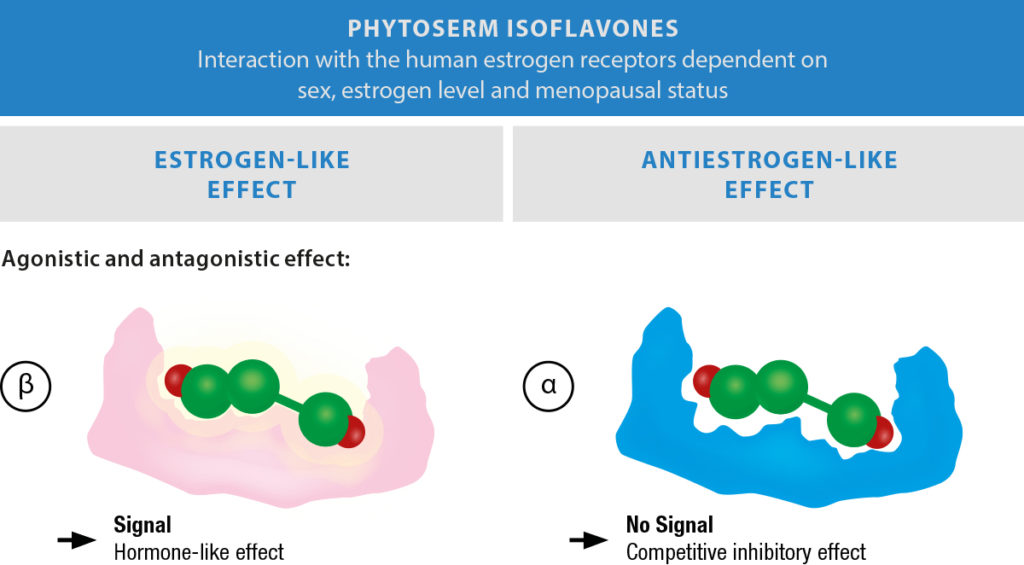MF11RCE® belongs to a class of botanical preparations that have a structure similar to endogenous estrogen. Its effect can be described as
- estrogen-like and
- antiestrogen-like.
Traditionally, they are often still called phytoestrogens, although they are in fact phyto-SERMs, that is, selective estrogen receptor modulators.
Estrogen takes effect via the activation of 2 receptors – ERα and ERβ. Both receptors are found in various tissues such as the uterus, ovaries, CNS, cardiovascular system, immune system, skin, gastrointestinal tract, bones, etc.
- Estradiol binds to both receptors
- Estrone binds primarily to α receptors (ERα)
- Estriol binds primarily to β receptors (ERβ)
Whereas the endogenous estrogens are steroids, the MF11RCE® isoflavones are non-steroidal. This is an important difference, which also accounts for the advantages and safety of MF11RCE®.
MF11RCE® can bind to both receptors, but it primarily binds to the β receptors. It has both an estrogen-like effect and an antiestrogen-like effect depending on the concentration and the target tissue. Due to this dual mechanism, it is termed a phyto-SERM (selective estrogen receptor modulator) isoflavone.

For women in premenopause, who show higher concentrations of estrogen than menopausal women, isoflavones occupy the estrogen receptors and block them, thus having a competitive antiestrogen effect, since estrogen can no longer dock on the occupied receptors and take effect. For menopausal women with lower concentrations of estrogen, the isoflavones dock on the receptors and trigger estrogen-like reactions.
The occupation and blocking of α receptors (which have proliferative effects on the hormone-dependent breast tissue and during the climacteric, particularly when the beta receptor density is decreasing and its inhibitory and thereby protective effect is constantly diminishing) substantiates the protective effect of MF11RCE® and its safety of use in relation to the risk of cancer.
